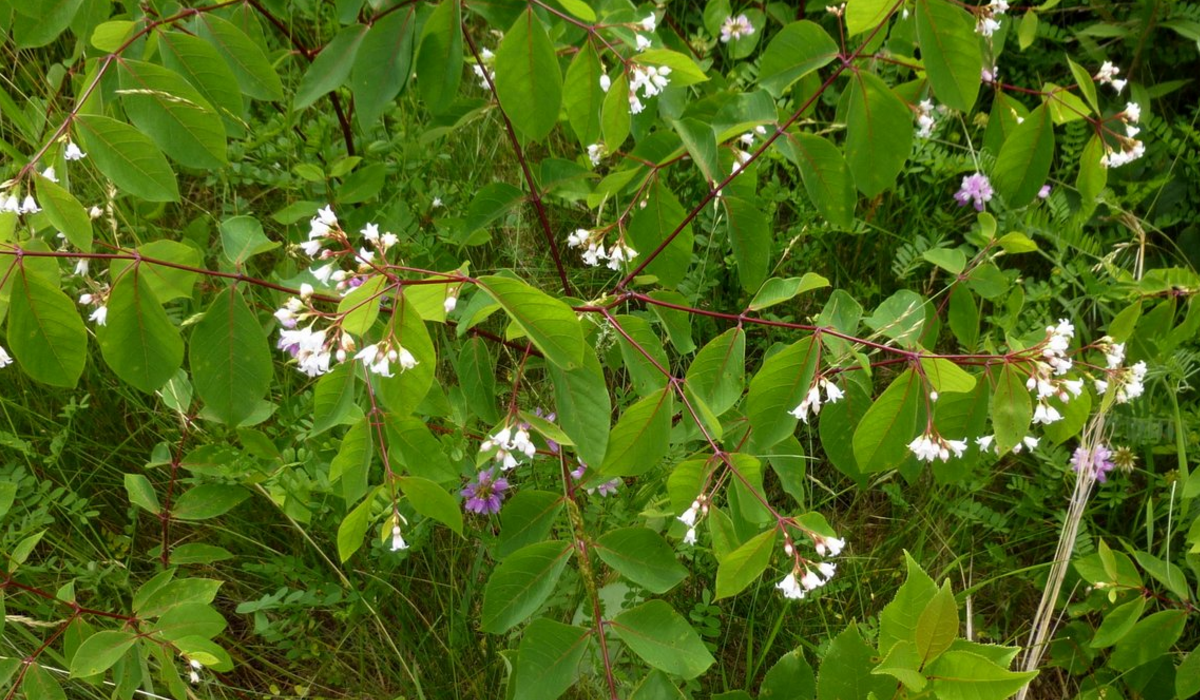
Dogbane, also known as apocynum venetum has long been used in Chinese medicine for the treatment of depression and hypertension. It was also used as a source of fiber by North American Aboriginals and is grown in Asia, Northern Europe, and North America.
While there are seven species of the dogbane plant the most noteworthy of them is called apocynum venetum. [1]
In Chinese culture, dogbane leaves have been used to make tea for thousands of years. Originally, the leaves of the small shrub have shown to possess anti-lipid peroxidation and anti-oxidant effects as well. In recent times, dogbane has gained popularity in the west due to its many health benefits, which was not known of before.
Dogbane is said to have certain sedative, cardio-protective and diuretic properties that are currently being researched on [2]. While most of the evidence of its health benefits are based on animal evidence, dogbane is believed to have a mild anti-depressant and anti-anxiety effect, but further research is needed to determine its main mechanism.
Tea made with dogbane leaves have long been recognized by the Chinese as an effective medication for liver imbalance and hypertension. Furthermore, the Chinese have also formulated a tea from dogbane leaves called ‘luobuma tea’ which is very popular in China and parts of the Far East.
Active ingredients
The leaves of the dogbane plant seem to be high on flavonoids and quercetin variants, which have been found to help fight hypertension, anxiety and depression. Apart from that, dogbane benefits are mainly derived from its active constituents among which are:
- Ionone glucosides
- Kaempferol
- Vanillic acid
- Baimaside
- Daucosterol
- Rutin
- D-catechin
- Quercetin and
- Kaempferol-3-O-beta-D-glucoside
Health benefits
Dogbane has a long history as a Chinese traditional medicine which has been used to soothe the nerves, calm the liver and dissipate heat. Modern pharmacological studies [3] [4] have also demonstrated that Dogbane possess a wide range of pharmacological activities. Due to the high levels of various flavonoid compounds present in the plant, it can also be used for the following:
- Anti-hypertensive
- Antioxidant
- Cardiotonic
- Hepatoprotective
- Lipid-lowering
- Antidepressant
- Anxiolytic
Cardiovascular Diseases: There are many Chinese herbal medicines which have been used for a wide variety of pharmacological activities and for the treatment of cardiovascular diseases as well. Dogbane has been one of those herbal medicines which have been used since the Xinjiang period and in areas of Tibet.
Blood Pressure: In a clinical study which was conducted in China, dogbane leaf extract was used on 60 subjects. The mean blood pressure in all of the subjects was recorded to have dropped from 171 to 154 and 148 mmHg after the treatment, which lasted for four and eight weeks.
Effective Anti-Depressant: Research on dogbane has been conducted not only in western countries, but also in countries such as China, Japan and Korea, where the herb has been widely used both preventively and remedially by the middle-aged and elderly. The research which has been carried out so far, suggests that dogbane definitely lowers blood pressure by increasing the amount of nitric oxide and thus causing vasodilatation. Yet there is other research that suggests that dogbane is effective for hypercholesteremia and the prevention of atherosclerosis. [5] [6]
The following are some of the other health benefits of using dogbane.
- Help relax the blood vessels
- Can help fight edema due to heart or kidney problems
- Can help to detoxify the body
- Believed to help fight complications due to diabetes
- Believed to help combat insomnia, irritability, headaches, vertigo, dizziness and palpitations due to liver hyperactivity
- Assists in better blood flow to the kidney
Further investigations will be needed in order to explore all of the individual bioactive compounds that are responsible for the in-vitro and in-vivo pharmacological effects of using dogbane.
Dosage
Dogbane tea can easily be obtained in readymade teabags. All you have to do is place a teabag in a cup of boiling water and allow it to steep for around five minutes. While the tea has a great aroma, its bitter, sweet and astringent taste could prove to be too much for your palette. Nonetheless, its many health benefits is one of the main reasons why most people prefer dogbane tea and use it as their preferred beverage.
While further research [7] is still needed in order to recommend an optimal dose for dogbane, it has been found that most of the health benefits occur when the dosage is kept between 25 to 100 mg per kilo of bodyweight. That being said, by using this formula, one can come up with an estimated dosage for dogbane which would provide maximum health benefits
- Person weighing 150lb > 270 – 1,100 mg of dogbane
- Person weighing 200lb > 360 – 1,400 mg of dogbane
- Person weighing 250lb > 450 – 1,800 mg of dogbane
Dogbane is a food product, which means that the aforementioned recommended dosage is ideal when making tea. This of course, would mean that there would be no need for additional non-tea supplementation while using dogbane.
Side effects
Although dogbane is widely used in Chinese medicine for its functions of reducing the incidence of arrhythmia, there are certain side effects which occur after the prolonged use of dogbane. While there are no severe side effects, some of the most common side effects of long term use of dogbane includes, vomiting, nausea and diarrhea. People are advised to consult with their doctor before using dogbane.
Summary: The health benefits of dogbane have only been found through animal studies. Research carried out on rodents has shown that dogbane has the potential to reduce anxiety and can also be used as an anti-depressant, much like other similar herbs. It has therapeutic potential in both the prevention and treatment of neurological and cardiovascular diseases and has given some promising results as a blood pressure lowering agent as well.
http://bodynutrition.org/dogbane/
No comments:
Post a Comment